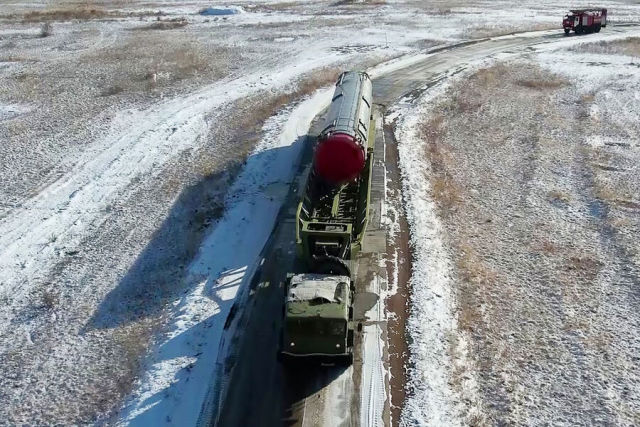Commander of the Strategic Missile Forces Karakayev reported on the successful tests of the Sarmat complex The Sarmat complex, an intercontinental ballistic missile that can carry a nuclear charge of 8 megatons for 18 thousand kilometers, has successfully passed flight tests.
This means that he is actually ready to be sent to the troops and combat duty. "Newspaper.Ru" recalls the panic caused by the Western media against the background of the launches of the latest Russian missile.
The Sarmat strategic missile system has successfully passed flight tests. This is reported by the Zvezda TV channel with reference to the words of the commander of the strategic missile forces, Colonel-General Sergei Karakayev.
Also, the launches carried out at the Plesetsk state test cosmodrome confirmed its capabilities of the Yars PGRC," the TV channel quotes Karakayev.
The commander of the Strategic Missile Forces also added that the practical development of new methods of maneuvering actions of the regiments has been completed. Since the beginning of 2022, more than 550 training marches have been carried out, half of which took place at night.
In early November, the former chief of the General Staff of the Strategic Missile Forces, Colonel-General Viktor Yesin, in an interview with the newspaper.Ru" said that the arrival of the missile system was somewhat delayed, including due to the lack of a number of Ukrainian components and the use of new technological solutions in the production of ICBMs.
According to Yesin, at the beginning of the month "Sarmat" was in a high degree of readiness to take up combat duty.
The RS-28 Sarmat is a fifth-generation Russian mine-based strategic missile system with a heavy multi-stage liquid-fueled intercontinental ballistic missile (ICBM). It should replace the Voivode complex, which has been in service with Russian troops since 1988.
The key difference from the intercontinental missiles of previous generations is that the emphasis is not on the maximum weight of the warheads, but on their maneuvering. That is, the Sarmat is better able to bypass the air defense systems of a potential enemy. The "orbital bombardment" system, which is embedded in the rocket, allows it to be used not only for military purposes, but also for launching civilian spacecraft into near-Earth orbit.
The maximum firing range is 18 thousand kilometers, which makes it possible to strike at enemy territory along a suborbital trajectory through the South Pole, bypassing air defense.
Serial production of Sarmats is carried out at the Krasnoyarsk Machine-Building Plant, the first samples should arrive this year in the 62nd missile division in Uzhur of the Krasnoyarsk Territory and in the 13th missile division in Yasnoye (Orenburg region).
The first test launch of the new rocket was carried out in April this year from the Plesetsk cosmodrome in the Arkhangelsk region. The target was a training ground in Kamchatka.
"The design characteristics have been confirmed at all stages of its flight. The training combat units arrived in a given area at the Kura training ground on the Kamchatka Peninsula," said Igor Konashenkov, the official representative of the Russian Defense Ministry at the time. The military department said that after the completion of the tests, the Sarmatians would be put into service.
The development and testing of the Sarmat complex have repeatedly become occasions for frightening and even panicky publications in the Western media. So, back in 2019, the British The Times published an article where it called the new Russian weapons a serious challenge for NATO and confirmed that even modern air defense systems cannot interfere with it.
The Sun in 2021 called "Sarmat", which NATO dubbed "Satan-2", the "biggest monster" in the Russian arsenal. Later, another publication said that the "Sarmatians" could destroy the whole of Great Britain in principle. The authors noted a speed of up to 26,000 km/h, maneuvering in the atmosphere along an unpredictable trajectory.
After the first April tests, the Daily Mail called the missile a "chilling message to the West" from Russian President Vladimir Putin. The launch did not go unnoticed on the other side of the ocean: the journalists of the American New York Post dubbed the complex a "disguised devil" capable of "creating hell on Earth."
Mikhail Kotlyar

